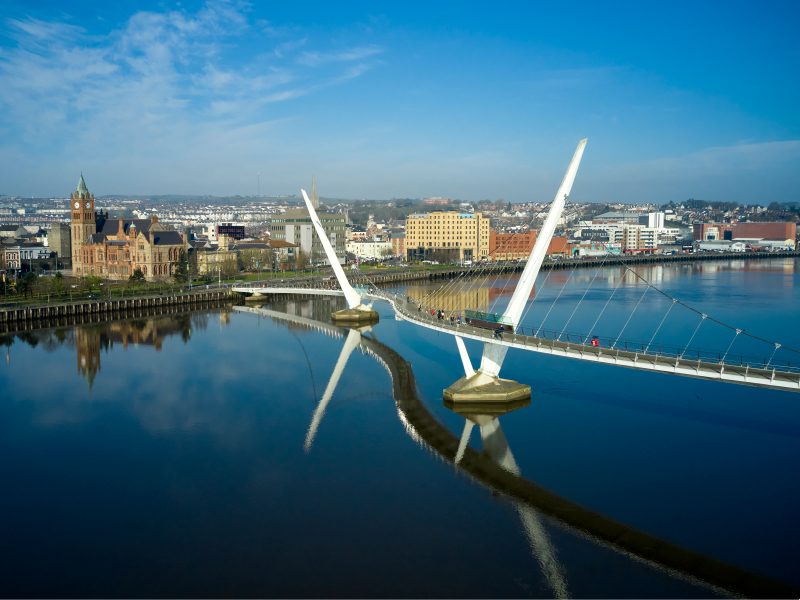
DISCOVER HISTORY & HERITAGE

The City Walls
The best way to get a feel for Derry’s layout and history is to walk the circumference of the city’s walls. (1.5km)
Completed in 1619, Derry’s city walls are 8m high and 9m thick, and are the only city walls in Ireland to survive almost intact.
The four original gates (Shipquay, Ferryquay, Bishop’s and Butcher’s) were rebuilt in the 18th and 19th centuries, when three new gates (New, Magazine and Castle) were added.

Museum of Free Derry
Narrating the history of the Bogside.
Just off Rossville St, this excellent museum chronicles the history of the Bogside, the Civil Rights Movement and the events of Bloody Sunday through photographs, newspaper reports, film clips, interactive displays and the accounts of first-hand witnesses, including some of the original photographs that inspired the murals of the nearby People’s Gallery.

The Tower Museum
Award-winning museum inside a replica 16th-century tower house. Excellent Armada Shipwreck exhibition, and the Story of Derry, exhibits and audiovisuals lead you through the city’s history, from the founding of the monastery of St Colmcille in the 6th century to the Battle of the Bogside in the 1960s. Experience the Derry Girls in a specially curated exhibition of the worldwide TV Show

St Columb's Cathedral
Derry~Londonderry’s oldest surviving building.
Built between 1628 and 1633 from the same grey-green schist as the famous city walls, this was the first post-Reformation church to be erected in Britain and Ireland and currently still in use. You can see the original foundation stone of 1633 that records the cathedral’s completion. The smaller stone inset comes from the original church built here in 1164.

The Guildhall
Landmark building in the centre of town.
Standing just outside the city walls, the neo-Gothic Guildhall was originally built in 1890, then rebuilt after a fire in 1908. Its fine stained-glass windows were presented by the London livery companies, and its clock tower was modelled on London’s Big Ben. Inside, there’s a historical exhibition on the Plantation of Ulster, and a tourist information point.

The Peace Bridge & Ebrington
The iconic bridge, completed in 2011, gracefully arcs over the River Foyle, connecting the walled city's west bank to Ebrington Square on the east. Its sinuous shape symbolically unites Cityside and Waterside, offering pedestrians and cyclists a scenic pathway across the river. Ebrington Square is now an open space used for concerts, with numerous cafes and bars for locals and tourists alike.

